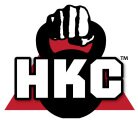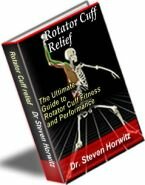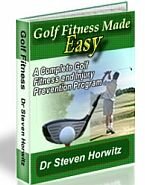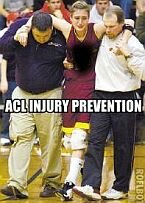Sports Injuries- General Article
It is amazing how many people who exercise and/or play sports do not understand the human body. As you begin your exercise program, pay attention to how your body feels before, during, and after exercise. Learn what feels good and what feels uncomfortable. You will be able to make adjustments that will enhance your routine. Learn what muscles perform what movements. By learning to listen to your body, you will gain tremendous insight into what works for you. Keep a journal that describes how you feel during and after each workout. You may notice some interesting patterns.
"Take exercise; for whilst inaction weakens the body, work strengthens it; the former brings on premature old age, the latter prolongs youth." Cornelius Celsus (10-60 AD)
TRAIN, DON'T STRAIN
Please do not pay attention to this "no pain, no gain" nonsense. Don't misunderstand - pushing yourself is OK and even necessary to make gains. However, pain is your body's way of warning you that something is wrong - pay attention and heed this warning! Replace "No pain, No gain" with "TRAIN, DON'T STRAIN." Many people play a sport in an attempt to get in shape. You must get in shape to play a sport! Start training weeks or months before the season opens, not the day before the first game, first ski trip or first tennis match.
WHAT YOU SHOULD DO FOR SPORTS INJURIES: R.I.C.E.
If you have pain while exercising, stop and remember R.I.C.E. - Rest, Ice, Compression, Elevation. Rest - stop what you are doing and do not stress the area for at least one day. Ice the area as soon as possible for 15 minutes every one to two hours. An alternative to an ice pack is ice massage. Freeze water in a Styrofoam cup. Hold the cup and massage the ice directly against the skin for about 5 minutes (until your skin turns numb). Compression- helps decrease swelling. Wrap an elastic bandage around the injured area. The bandage is too tight if the area becomes numb, begins to cramp, or begins to hurt. Elevation of the area above the level of the heart will help decrease swelling by allowing fluid to flow back toward the heart. Continue elevation of the injured area while sleeping.
See an article about chiropractors and athletes: Chiropractic and Athletes
WHEN SHOULD YOU SEE A DOCTOR
See a Certified Chiropractic Sports Physician(CCSP) or Sports Medicine M.D. or D.O.(Osteopathic physician) to get your problem evaluated and treated correctly if (1) pain persists for more than 1 week, (2) you can't move the injured area, (3) you get an infection (look for spreading redness under the skin). You only have one body; take care of it properly.
See Active Release Techniques® and Graston Technique for more information on injury care and prevention.
REHABILITATION: R.E.S.T.
As you are healing from an injury, a rehabilitation program becomes essential. Specific exercises must be done for the injured area which include range of motion, stretching and strengthening exercises. Once you are able to return to your regular exercise program, remember REST: Resume Exercise Below the Soreness Threshold. It may be helpful to think about injuries in 4 stages:
Stage 1: You are able to exercise, but you have pain afterwards.
Stage 2: You are able to exercise, but you have pain during exercise. This pain does not effect the quality or quantity of your exercise, e.g.. if you run, the pain does not affect how fast or far you run.
Stage 3: You have pain during exercise and it affects your performance. e.g.. If you run, the pain slows you down or causes you to shorten your distance, or both.
Stage 4: You are unable to exercise at all due to pain.
When to return to your activity is best discussed with your doctor.
PREVENTION: "TRAIN, DON'T STRAIN!"
TRAIN - Technique, Recovery, Aerobics, Increase Strength, Nutrition
- Technique - Proper form and equipment are critical to injury prevention.
- Recovery - Start your exercise program slowly; gradually increase your activity. Warm up before you exercise and cool down after you exercise. You can use an excellent product called The Stick.
- Aerobics - Train your heart with exercises like walking, biking, etc. at least 3 times per week for 20-40 minutes at your target heart rate.
- Increase Strength - Strengthen your body by weight training at least 2 days/week with 48 hours rest between workouts. Exercise all muscle groups (chest, back, shoulders, arms, legs, midsection); start with 2 sets of 10 reps per exercise.
- Nutrition - Eat right! Your diet should be about 55-60% carbohydrates, 15% protein, and 25% fat. The most important nutrient is water; drink at least eight 8 ounce glasses per day. Drink 16 ounces of water before aerobic exercise. Weigh yourself before and after exercise. You should not lose more than 2% of your body weight. Replace each pound lost with one pint of water.
MUSCLE SORENESS
You should NOT be sore after a workout! In the beginning, this may occur even if you are careful. However, soreness after every workout does not mean your workouts are effective. It means you are doing damage to your muscles by not letting them recover properly. Muscles grow by tearing down and building back up. The building up phase requires rest. Constant muscle soreness means you are not giving your body the time it needs to rebuild and grow. Adjust your routine to allow your muscles to properly recover. Ways to prevent muscle soreness include proper warm up and cool down, stretching, and ice applied immediately after exercise to the involved area.
Do not underestimate the importance of resting. Recovery from your workouts is just as important as the workout itself. Many elite athletes, after being forced to rest due to injury or illness, return and perform at a higher level than before the injury. The symptoms of over-training - fatigue, general body malaise, disinterest, sleeping difficulties, listlessness, sweating - are sure signs you need rest. Either decrease the intensity of your workouts or just skip one.
Use the Stretch Out Strap to help decrease soreness.
For more information:
National Athletic Trainer's Association
|
The Ultimate Nutritional Lie Detector Test LEARN MORE 
|
Kettlebell Rehab

Click Here
To See How Kettlebells will transform your body!
Vortex Rehab

Click Here
To See How This
Revolutionary Machine
Can Help You!
Partner / Support

Loans up to 3 months - fast cash advances for up to 90 days and up to $5,000!


















